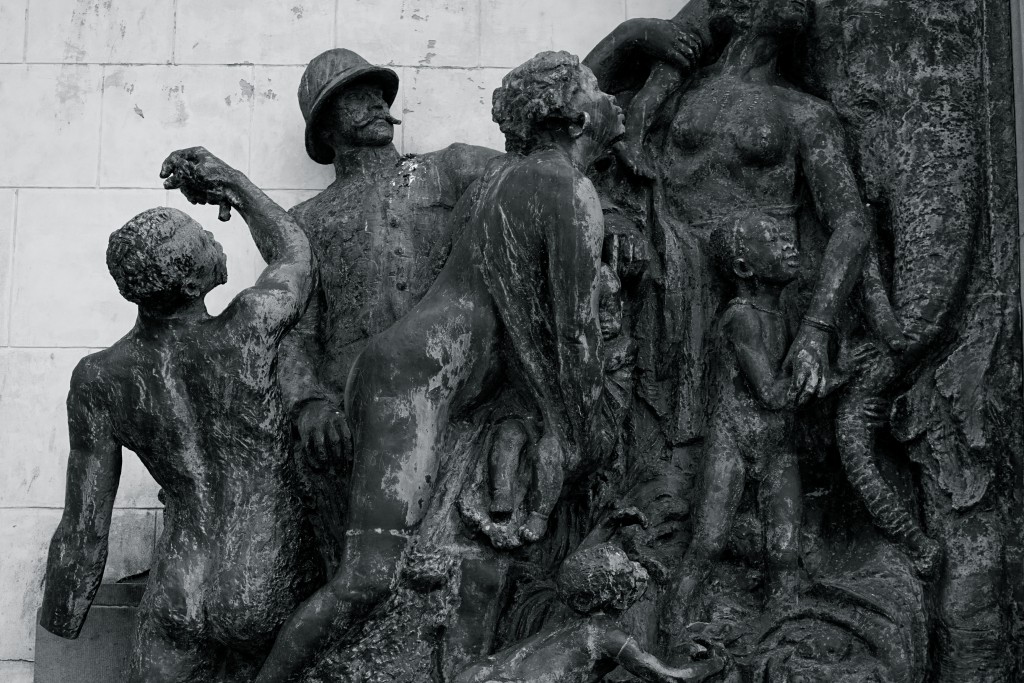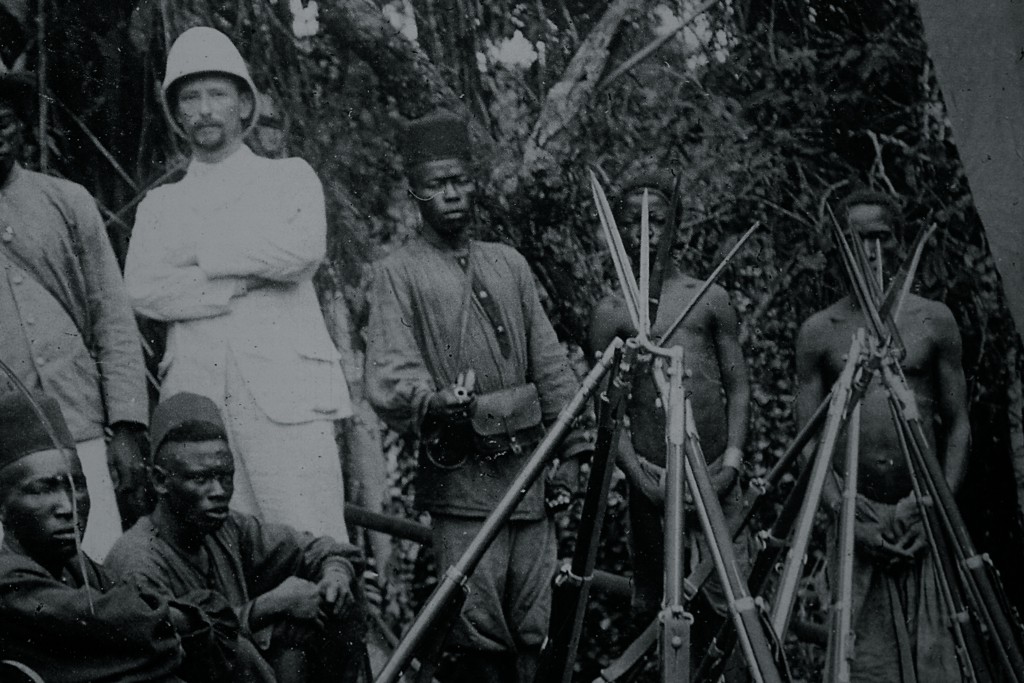Midnight Love: The Marvin Gaye Tour of Ostend, Belgium
Marvin also loved to jog by the beach, and the tour moved me to his favourite spot, and thoroughly into Leopold stomping ground. I walked along Royal Avenue, past the Royal Park, with its locked, rusted gates and crumbling coat of arms, then onto Albert 1 Promenade. I wondered what Marvin would have made of the man straddling a horse, looking out to sea, responsible for so much cruelty towards black people. The statue of King Leopold II is perched on a ‘Belle Epoque’ style structure that he commissioned himself. Below his statue is a series of African men, women and children clamouring, reaching, striving to touch the hem of the King’s garment. In reality, of course, this couldn’t have been further from the truth. The Congolese would have been terrified of a man who ravaged their land for its natural resources and installed one of the most brutal regimes history has ever seen.
Though the statue was riddled with lies, set in stone and committed to history, somebody had taken it upon themselves to shape it in a more truthful form. At the base of the monument, I noticed the African man, naked and savage looking, had a hand missing. It had been sawn off in 2004 by protesters, to remind people of the maiming that took place, and despite numerous attempts by pro-colonialists to have the statue repaired, the Belgian government decided to leave it with the hand missing. Again, a silent acknowledgment of the travesties, whilst avoiding an official, public apology. I saw that the King Leopold statue had once been accessible via a walkway on the top of the aqueduct. I looked around, saw that nobody was looking, and managed to climb up to it via a steep ramp. The walkway leading to the top of the statue was overgrown with weeds and the stucco surface was peeling off the concrete. I looked up at the statue, touched it, and then did something that even surprised myself. Almost involuntarily I sucked up and spat on the statue. If I could, I would have probably attempted to damage it myself.

I quickly clambered back down, feeling a mixture of embarrassment and pride, and made my way to the next stop on the tour. I passed the colonnades of the Royal Venetian Galleries, another King Leopold II creation, where Tervuren, the African Museum in Brussels, had set up a small, temporary residence whilst it undergoes major refurbishment. Tervuren is one of Belgium’s most controversial buildings, and had been known as ‘a museum of a museum’, due to its shocking colonial propaganda on display, unchanged since King Leopold’s Congo Free State.

I decided to take a slight break from my Marvin Gaye tour to nip inside and see the current exhibition on display, entitled ‘Trenches in Africa 1914-1918’. The guide announced, valiantly, that, during the First World War, “…Belgian-Congolese troops and German troops would fight each other in German East Africa, until the end of 1918… the objective of this exhibition is to tell the story of the role played by the Congolese during this bloody battle”.
The exhibition used the ‘evil Germans’, attempting to take over the Belgian-Congo colony, as a way of taking the focus off their own dark history in the Congo. The Belgian-Congolese fighters were part of the Force Publique, whose origins began with forced enrolment in order to subdue any dissenting Congolese who were trying to rise up against the rape, murder, kidnapping and torture they were being subjected to by the Belgians. There was no mention of this, but the death rate of the conflict with the Germans tells you how, even in 1918, a couple of decades after the end of King Leopold’s reign, Congolese life was treated with short worth: Only 145 white soldiers died in battle compared with 1,895 Congolese, and a reported 20,000 civilian deaths. The Belgians had much more Congolese blood on their hands than the Germans. I walked around, saw a bunch of photographs of sad looking Africans surrounding their proud-looking white Belgian leaders, and left.





This article is wonderfully written, with beautiful, powerful accompanying photographs. I appreciate how your initial intentions were to uncover the path of one ghost, and in fact you’ve uncovered a million others as a result of the brute that was Leopold II. Regarding your spitting at the vulgar misrepresentation of history, enshrined in false iconographic form, I felt similarly whilst travelling around Mexico, Colombia and Brazil. It came to a head in Cartagena, northern Colombia, a city central to the slave trade and the colonial raping of a thriving civilisation. I’d been told “you must go there”, “the old city is so beautiful”. Contrary to people’s valorisations, I felt a deep sense of unease, sadness and anger whilst surrounded by some of the most astoundingly beautiful architecture. Not only was it stained in the blood, sweat and tears of the slaves, but it was a staunch reminder that the systems of segregation, oppression and inequality born from that era were resolutely still in place. The poverty, squalor and economic deprivation that characterises Colombia are manifestly obvious in Cartagena. Those with wealth enjoy the old colonial centre, whilst former slaves provide them with tours in the ornate horse and carts from back in the day. I wrote about it after escaping this travesty, which helped me to process my anger to some extent. I wish I’d spat, but I went trekking for five days instead! Here’s the piece I wrote, for anyone interested:
http://anactivistabroad.com/2013/06/17/little-brother/
Wow! Really enjoyed this. A fascinating mix of history, reflection and the search for “soul” of a place , of a time, of a person and of an empire.
Great stuff.
Great read! Now I am intrigued to embark on this marvin Gaye digital tour, whilst listening to his album. Something tells me I’ll also “voluntarily” add my spite of King Leopod’s through the activation of my salivary glands;) hehe !
Great read! Now I am intrigued to embark on this Marvin Gaye digital tour, whilst listening to his album. Something tells me I’ll also “voluntarily” add my spite of King Leopod through the activation of my salivary glands;) hehe !
You wrote this piece as beautifully as Marvin sung some of his best work. I loved it.
This is very well worded and useful, thankyou. I like the way you explain key concepts minus hyperbole. It’s useful information and I deem you worth sharing.